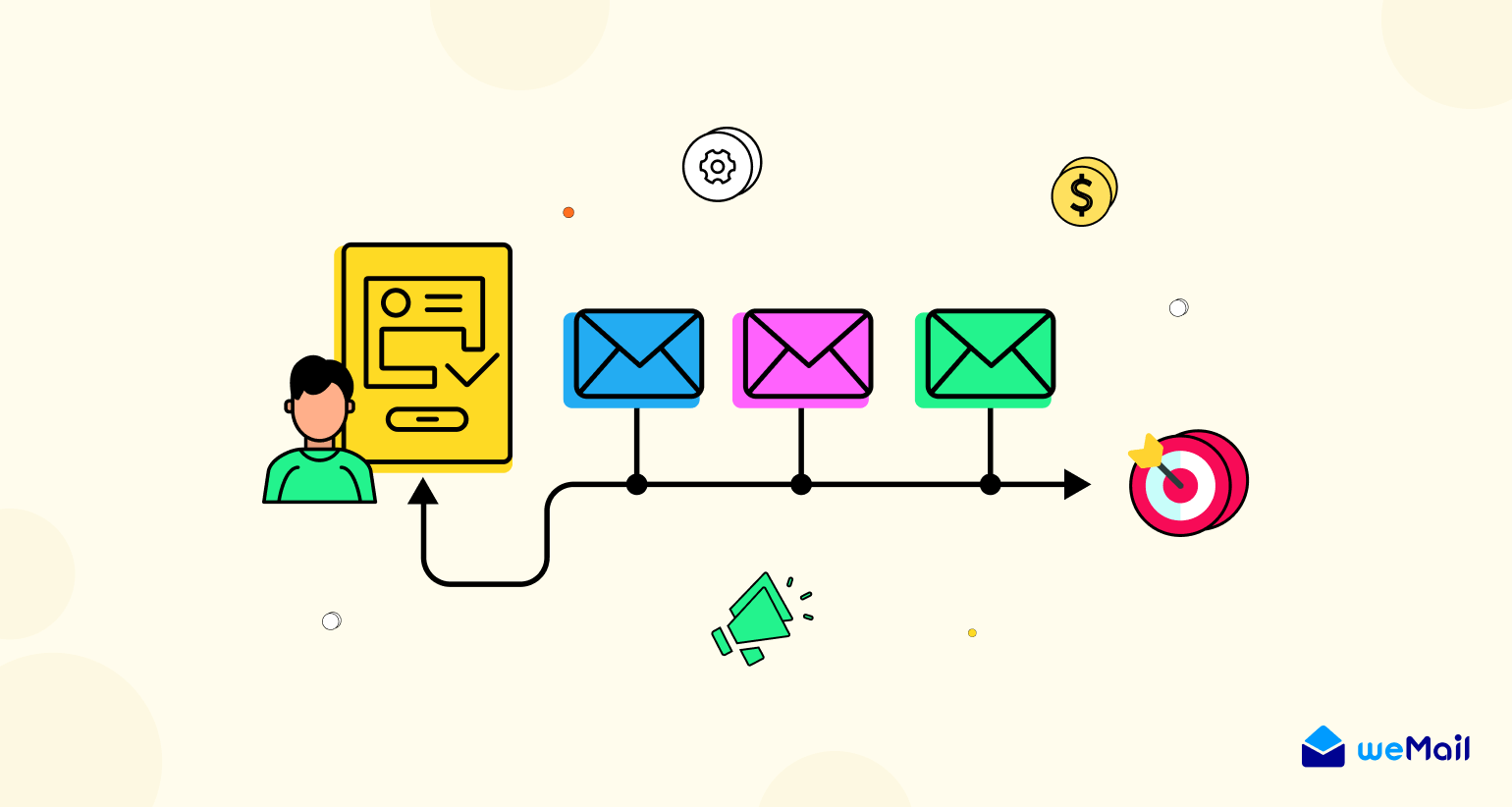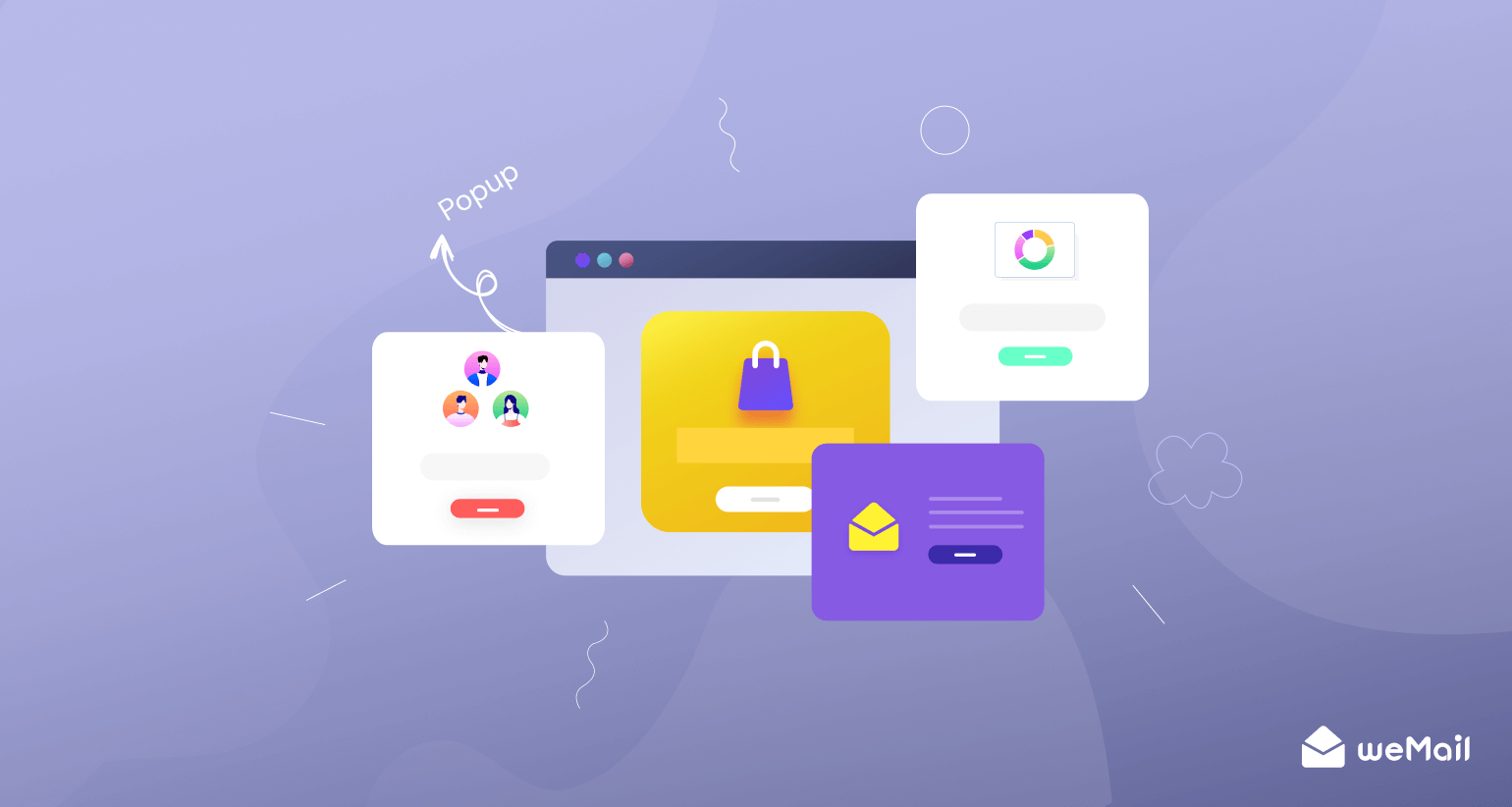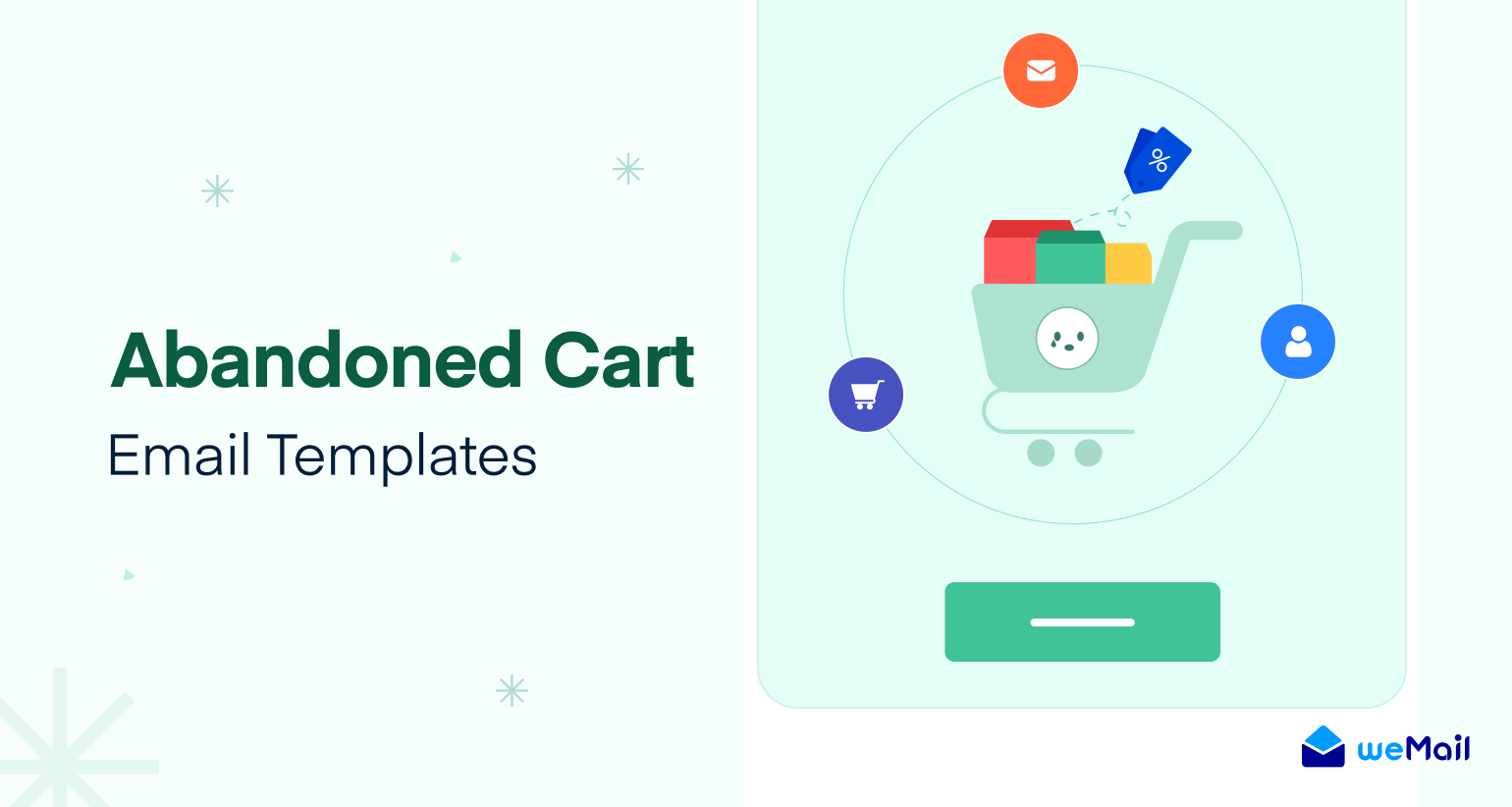What is Drip Marketing and How Can You Benefit From a Drip Campaign

Email marketing become more competitive over time. Marketers can only adjust as audiences become busier, more aware of puffy marketing copy, and demanding personalized experiences. In this context, drip marketing, a new, focused application of established principles, can thrive.
But what is drip marketing, exactly, and which principles is it upholding? Perhaps more importantly, does it work, and how can you benefit from it? We have come up with the most reasonable answers.
In this article, you will learn –
- What drip marketing is
- Why drip marketing works
- How you can benefit from drip marketing, and
- How to set up an effective drip marketing campaign with an email marketing tool
Let’s get on with the first question.
What is Drip Marketing

Drip marketing simply refers to the strategy of drip-feeding relevant content to your audiences – typically, but not always exclusively, emails. As you might guess, this is no longer a new concept, nor is it reinventing the marketing wheel. Consider how MailChimp defines it, for instance –
Drip marketing is simply sending a limited number of emails to your audience automatically, on a set timing, based on actions they take or changes in their status. Businesses use drip marketing to keep in touch with an audience—in a personalized and targeted way—following important actions or dates.
MailChimp
This may sound very similar to relationship marketing or event-triggered emails. It might seem like specialized email automation, much akin to behavioral email campaigns. That’s because, in essence, it is a more focused application for these same principles.
This does not, nor should it, differ from how one approaches drip marketing emails. It’s the same principle of delivering timely, personal, actionable content at opportune times, “dripping” the right content to convert the leads.
Why Does Drip Marketing Work

If merit by association doesn’t seem entirely convincing, there are many simple reasons drip marketing works by itself. Applying these tried-and-tested principles achieves what virtually all email marketers should strive for. To illustrate this, simply consider the three following qualities among many adjacent ones.
1. Drip Marketing is Holistic
First, it’s holistic; it does not require a reinvention of your funnel, nor does it exist outside of it. Instead, Drip Marketing leverages the same customer data and boosts the same campaigns you’d usually lean on. It starts with audience segmentation, proceeds to copy personalization, and attaches itself right to the customer journey.
For example, you’re probably using a CRM – perhaps HubSpot, Zoho, or another household juggernaut. Or perhaps MoversTech CRM if you’re in the relocation industry or another industry-specialized CRM. In any case, you’re likely already using your CRM to:
- Collect customer data and use it to personalize their journey
- Segment audiences for more efficient outreach
- Optimize emails to improve your open rate or click rate with specific segments
In turn, your marketing outreach might strive to look like Pardot’s following illustration of drip marketing:
Alt-tag: An illustration of drip marketing by Perdot.
Drip marketing wouldn’t interrupt any such processes. If anything, it would spearhead them, using historical customer data, interaction data, and current behaviors to inform outgoing emails. It’s exactly what you’ve done before, only with laser-focused automation seeking to improve your operations.
2. It’s engaging
Second, it’s engaging; it’s not cold emails lacking context which interrupt your leads’ day, but ones relevant to their journey. When it takes 8 touchpoints to make a sale, and those touchpoints need relevance, drip marketing addresses this exact need.
This kind of relevant engagement evidently pays off, as Marketo finds:
“At Marketo, we found that our lead nurturing campaigns that use behavioral targeting have 57% higher open rates, 59% better click-to-open rates, and a whopping 147% higher overall click rate. Research from Gareth Herschel at Gartner found that event-triggered campaigns […] performed five times better than traditional batch campaigns. On top of that, Forrester Research recently found that […] mature practitioners [of behavioral marketing ] grew revenue faster than they planned (53% versus 41%).”
This kind of performance is timeless, too, as MarketingSherpa also illustrates:
Therefore, drip marketing is by no means a risky endeavor. Its principles have demonstrated their validity time and time again, as data shows.
3. It Spearheads Personalization
Finally, as a combination of the above factors, drip marketing champions personalization like few other marketing tactics. It accounts for your recipient, what they do and cares for, and where their journey has gotten them. These are the questions any personalized email campaign should answer, and drip marketing thrives on them too.
You likely need no reminder of the value of personalization, as most marketers embrace it. So do audiences, as OptinMonster asserts with equal parts brevity and accuracy:
“Consumers love getting messages and offers that are personalized to their needs and interests. […]When your emails are personalized to each user, they’ll be more likely to take action and engage with your emails.”
Likely surprising next to nobody, data supports this claim too:
This, with no exaggeration, is drip marketing’s explicit goal; to personalize emails for each recipient. Therefore, it only stands to reason that these principles have now focused on this refined form of advanced email automation.
How you can benefit from drip marketing
These qualities may let drip marketing work for audiences, but you might wonder how it can work for you. That is, how you can benefit from it – in specific, concise terms. While rudimentary, this section should cover that logical concern.
1. Save time through automation
Initially, drip marketing employs automation by definition; it can’t possibly function on a large scale otherwise. As the next section will make clear, it hinges on advanced, sophisticated, and targeted automation to achieve its goals.
In this regard, drip marketing comes with all the efficiency advantages of automation. It does require some initial work, as all marketing tactics do, and some manual effort to set up.
But once it takes off, we cannot overstate the time it saves. Automating event-based and journey-relevant outreach can free up marketers to focus on more creatively demanding tasks.
2. Nurture leads more effectively
Second, drip marketing makes for significantly more efficient lead nurturing. Combining automation and triggered emails with deeply personal copy demonstrably enhances lead acquisition, as few other tactics can do.
MakeWebBetter puts this in simple and earthly terms:
“Automation comes up as a boon to the whole culture of email marketing which incorporates the path of – ‘the right message to the right person at the right time.’ When you create campaigns that connect your related audience, this will definitely improve your conversion with scaling heights.”
This isn’t just a baseless assertion bent on using buzzwords either, as data shows:
3. Personalize outreach
The way drip marketing achieves these results is, as highlighted by manifold, personalization. In this context, to use HubSpot’s illustration above moves beyond the “personal”; it doesn’t just account for “who” receives a copy. Instead, it moves into the “timely” and the “action-based”; “when” outreach happens, and “why” recipients’ actions make it relevant.
These are crucial components of personalization, especially as regards email outreach. With more than 149,513 emails sent each minute, inboxes are positively bursting. Recipients need to know why marketing emails are relevant to their actions and experiences, why they cater to them personally, and what they will gain from the interaction. These are the boxes drip marketing intends to tick, yielding more lead acquisitions and conversions.
4. Increase Customer Retention
The natural outcome of personalized outreach and a steady drip of content is increased customer retention. Customer retention ultimately hinges on a stellar customer experience, but communication frequency and relevance are just as crucial. In this regard, drip marketing helps ensure your leads remain keenly aware of your offerings and their value. The value of customer retention should, of course, never be underestimated. LinkedIn’s Shaumik Saha puts it best:
“The fact that customer retention is a much more economically viable strategy when contrasted with aggressive customer acquisition should be a no-brainer, given the difference in time and resources required for the execution of both. What’s more important is recognizing good customer retention as an essential aspect of sustainable business growth.”
As such, focusing on proper lead nurturing and consistent retention can be significantly more profitable than padding lead lists. Shaumik’s handy infographic on the matter lends further credence to this established concept:
5. Discard inactive leads
Finally, drip marketing also helps weed out inactive leads, which needlessly clog up campaigns. As Perdot’s visualization above illustrates, there does come the point where the drip must end – when leads simply don’t engage with the emails you send them.
Doing so still doesn’t come easy for many marketers, especially those struggling to populate lists. Some remain hopeful that more (or more focused) outreach might finally push a lead further down the sales funnel. While logical, as giving up on leads too soon may prove harmful, drip marketing helps pinpoint the exact discard line. It sets a clear path on the marketer’s end, consisting of specific desirable actions which leads should follow. This gives them more palpable criteria for list cleanups, ultimately keeping lists and campaigns healthy.
Setting Up a Drip Marketing Campaign with weMail
Now, having covered the fundamentals of drip marketing, this section can outline just how you can set your campaigns up. Fear not if it still seems too complex a process or too daunting an endeavor. It can be a breeze with some initial groundwork using your existing customer data tools and weMail’s advanced email automation.
1. Identify your audiences
First, as with all campaigns which require personalization, you should pinpoint exactly who you’re targeting. Depending on your industry, business goals, and other factors unique to you, consider such segmentation criteria as:
- Demographics, psychographics, and behavioral; are the major types of audience segmentation
- Journey-based; where exactly each segment finds itself in the customer journey
- Action-based, depending on which actions are most desirable or valuable for your business
- Geographical, if you’re targeting local audiences
- Job titles, company sizes, and similar criteria if you’re engaging in B2B Marketing
Segmentation is, of course, a highly personal matter, depending on an array of factors unique to each business. Still, the above should serve as sufficient starting points of universal value. With your CRM, website heat maps, and other customer data collection tools in hand, this part should be no challenge. Then, weMail’s list option will allow you to target specific segments with specific triggers – as step #4 will discuss.
2. Set Your Goals
But before you do, you must carefully outline exactly what your drip marketing campaign intends to achieve. Generic goals like “improving outreach” don’t align well with SMART goals and don’t meaningfully benefit your business. Perhaps most importantly, they don’t give you specific metrics to measure success against either.
So for this step, you may revisit your lists and performance and ask such questions as:
- Which audience segments don’t perform as desired?
- What parts of the customer journey seem to leak leads?
- Which actions leads take might need a follow-up to nudge them along?
With these questions answered, you may craft more specific goals, such as boosting retention rates for the X segment. Perhaps increasing conversions for Y products makes more sense for you, or maybe you need more leads for the Z campaign. In all cases, setting crystal-clear goals will significantly help you fine-tune weMail’s automation to your benefit.
At the same time, segment sensibilities aside, sending times are always crucial. If you need a quick refresher on universally optimal sending times, the following video should help you:
3. Craft your messages
With your goals and target audiences in mind, you may now begin crafting your messages. This is a very personal process, so this section can’t quite guide your hand. It can, however, remind you of the fundamentals of an appealing email. In a brief, digestible bullet list, you may mind such factors as:
- Recognizability; use BIMI principles, known sender names, and directly relevant subject lines, so recipients understand exactly who you are at a glance – and why the email deserves their time.
- Brevity and value; keep the email body brief and to the point. Audiences are far too busy, so they will value concise communications unless your segmentation data suggests otherwise.
- Relevance; always keep your emails perfectly aligned with your goals and your audience’s interests and actions. Drip marketing thrives on relevance, a key component of personalization across the board.
The same principles should, of course, apply to any relevant forms your craft. For text economy, the following video should help you get started in this regard:
4. Start sending
With all your groundwork now covered, you can begin setting up your automation with weMail. For such a complicated process, weMail’s setup is as simple as can be. First, once you visit your WordPress dashboard’s Automations area, you just need to click “Create New.” There, you’ll be greeted with the following pre-defined options:
“Tag added” is the most advanced option, which you can use to fire up automation for specifically tagged subscribers manually. Even disregarding the option entirely, you’ll still have the four most common and effective automation triggers for drip marketing:
- Product purchase, for immediate follow-ups on purchases such as onboarding emails
- Welcome messages, for welcome emails, once a subscriber joins a list
- Marketing activity, to tie outreach to ongoing marketing campaigns
- Anniversary date, for special event emails to further foster customer loyalty
From there, you may set up your automation – as step #1 illustrated. There, you will have 4 options:
- Automation name, so you can track each automation
- Trigger, where you can set desirable email triggers
- List, where you select which lists the automation applies to
- Settings, where you can repeat the workflow for subscribers who rejoin lists
Finally, once you create your automation, you’ll see the following page:
Here you can put all your planning into action, adding steps to the sequence as needed. Your main options here are:
- Delay, where you can set outreach delays for individual segments
- Mail, where you can refine your carefully-crafted emails for each campaign
- Action, where you can set up custom actions for each journey, such as tagging a subscriber or adding them to another list
Once you’re done, click on “Draft”, switch it to “Active”, and you’re done!
#5 Monitor, reevaluate, and adjust
What’s never finished, however, is the final step of monitoring and adjusting. Once your automation goes live, unwavering diligence is always necessary to ensure you’ve achieved your goals. A simple oversight on your part, a change in audience trends, or a wealth of other factors may require adjustments. But this inescapable marketing fact is exactly why you’ve established clear, measurable goals above.
Thankfully, as you can see above, weMail offers a full report of every automation’s performance. With these insights in hand, you can swiftly adjust your automation and keep your campaigns aligned with your goals and audiences. A simple tweak to an individual step within your workflow may be all it takes to return on track.
Drip Marketing is Email Automation Refined
To summarize, drip marketing significantly overlaps in principle with established email strategies. It leverages automation to deliver timely, personalized, and relevant emails in response to recipient actions.
Like behavioral emails, it seeks to champion personalization and immediate action-based relevance. But as it does, it focuses explicitly on sustaining a steady “drip” of relevant outreach to help capture, nurture, and ultimately convert leads more effectively.
If you have any further questions on drip marketing, its benefits, or how you may set up your campaigns efficiently, let us know in no time. Drip marketing doesn’t have to be perplexing or mystified – and with their help, it won’t be.



